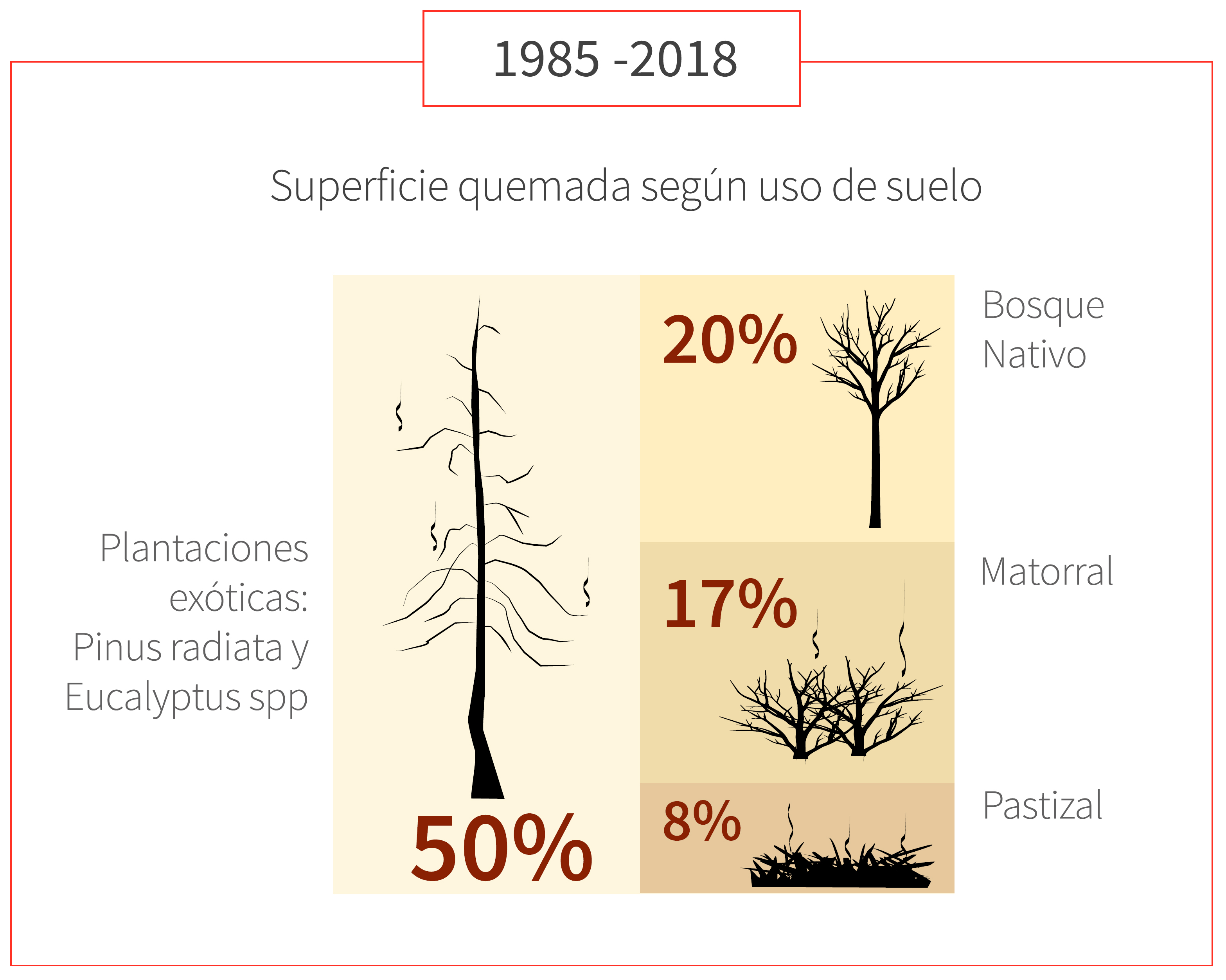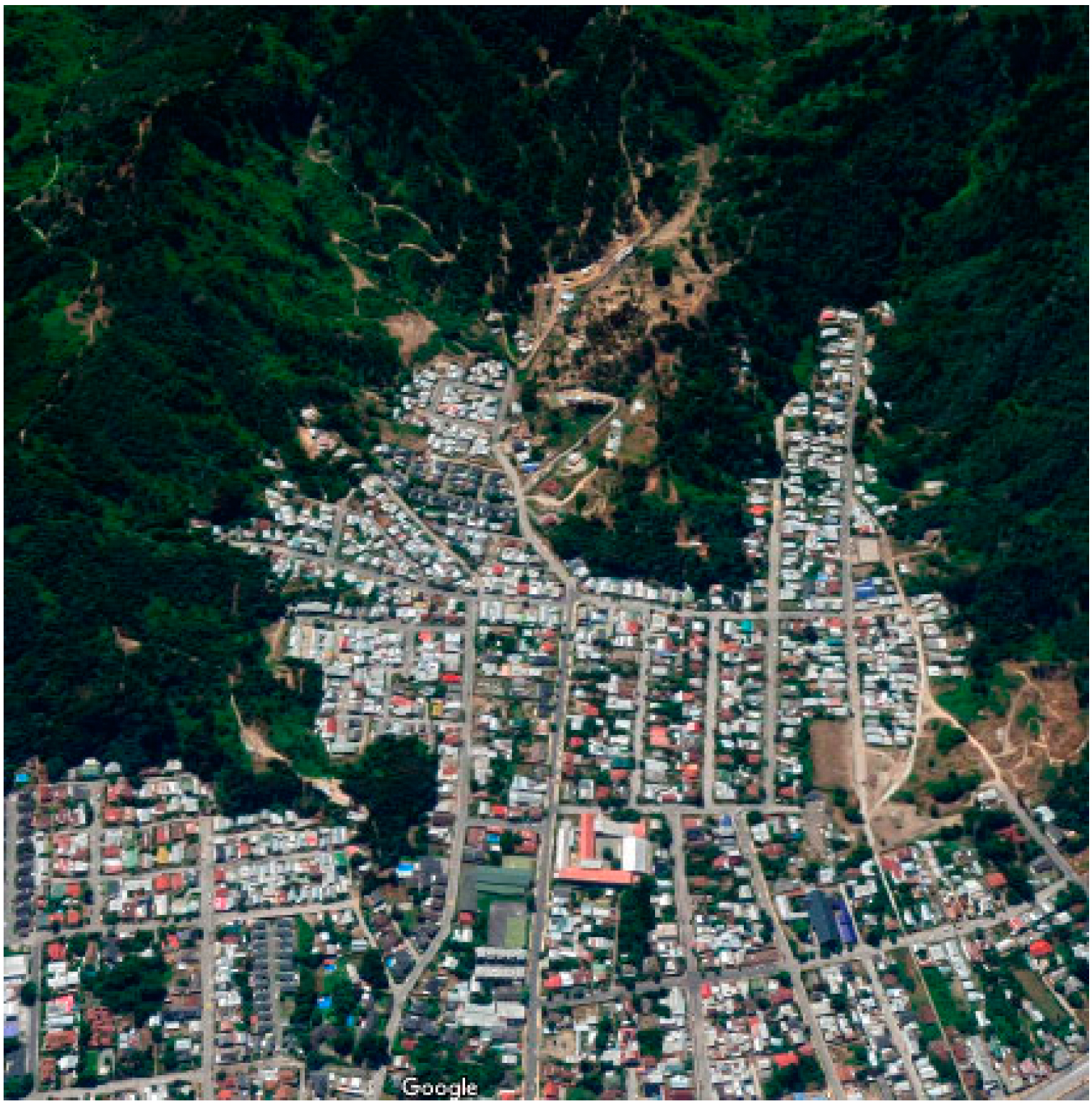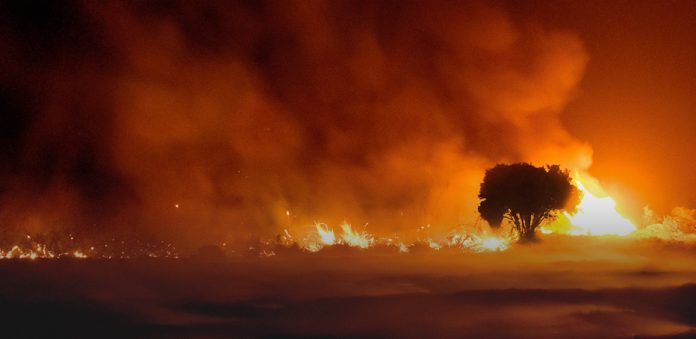The occurrence of extremely destructive, hard-to-control fires – called megafires – has increased in south-central Chile since 2010, causing serious social, economic, and environmental impacts. Human activity and changing land use are key factors in the occurrence and magnitude of these events, and there is clear evidence that they are exacerbated by climate change.
By Mauro E. González, associate investigator, Center for Climate and Resilience Research (CR)2 and Director, Center for Fire and Resilience Research into Socio-Ecological Systems (FIRESES), Universidad Austral de Chile
Over the last decade the fire regime in Chile has changed markedly, compared to the past. The main changes are in the duration of the fire season, the greater size, severity, and simultaneity of fires, and an increase in the annual burned area, especially between the Valparaíso and Araucanía regions. As indicated in the report “Forest fires in Chile: causes, impacts and resilience”, these changes are mainly due to factors linked to climate, vegetation coverage, and human action.
In regard to the climate, Chile has for over a decade been experiencing a rainfall deficit, known as a megadrought, which increases the flammability of vegetation and encourages the spread of fires. Another key factor has been the increase in heatwaves over the last decade, which has resulted in more extensive areas being burned (Figure 1). Within the context of climate change, with even lower rainfall and higher temperatures forecast, the scenario is expected to become even more ripe for the occurrence of large-scale forest fires in the future.
 Figure 1: Dispersion of maximum summer temperature index and total burned area, 1985 to 2018, between the Valparaíso and Araucanía regions. The grey oval shows the direct relationship between higher temperature and greater burned area.
Figure 1: Dispersion of maximum summer temperature index and total burned area, 1985 to 2018, between the Valparaíso and Araucanía regions. The grey oval shows the direct relationship between higher temperature and greater burned area.
Added to the climatic factor is that of land use, with vast forestry plantations and scrubland being determining factors in fire propagation. From 1985 to 2018, plantations of exotic species, mostly Pinus radiata and Eucalyptus spp, accounted for 50% of the area burned by megafires (Figure 2).
 Figure 2: Type of vegetation cover (%) most affected by megafires
Figure 2: Type of vegetation cover (%) most affected by megafires
Fire occurrence is influenced not only by climatic conditions and type of vegetation (or fuel) in a given territory, but also by what sparks these events. Among forest fires with a confirmed cause, 88% are caused by humans, whether accidentally (56%) or intentionally (32%). Natural causes account for 1% of fires and the remaining 11% correspond to undetermined causes, although most are presumed to have been started by humans. One notable feature of human-caused fires is the rural-urban interface (RUI), the area where human communities and roadways adjoin cropland, scrubland, native forests, and other ecosystems (Figure 3). Eighty percent of the population is concentrated in these places and they account for around 60% of fires that occur. The main factor that increases the risk of fires in the RUI is the proximity of vegetation-covered spaces to urban ones, and population density in the latter.
 Figure 3: Rural-urban interface (RUI), where residential areas adjoin vegetated land cover.
Figure 3: Rural-urban interface (RUI), where residential areas adjoin vegetated land cover.
Fires have multiple effects and impacts on society and on the environment. The loss of residential and productive infrastructure and the provision of ecosystem services, and, crucially, the loss of human life, are the most important. The quantification of the socioeconomic costs of forest fires primarily takes into account the costs associated with preventing, controlling, and fighting fires, and the loss of timber. It is apparent that a more effective estimate of the real economic costs must be developed, taking account of the loss of productive capacity and biodiversity, as well as the reduction in the provision of ecosystem services. Forest fires also cause irreparable damage to the lives of those affected, with psychological and community-wide impacts that go far beyond material and economic losses, affecting people, families, and entire communities on many levels, increasing feelings of vulnerability and abandonment. These impacts are distributed unequally, depending on previous socioeconomic and environmental conditions and the degree to which communities are exposed to this threat.
From a different perspective, another major impact of forest fires is their contribution to greenhouse gas emissions. For example, the megafires that occurred in Chile in the summer of 2017 released an amount of carbon dioxide (CO2) equal to 90% of Chile’s total CO2 emissions in 2016.
In regard to fire-related policies in Chile, one of the main challenges is to enhance inter-institutional coordination, which presently only occurs during emergencies or disasters. To better address the socioeconomic and environmental consequences of fires and megafires in the future, landscape management and fire management policies and fire prevention strategies must be adopted as priorities. A suitable long-range forecasting system also needs to be developed, which considers heatwaves, for example, in prevention plans and early warning systems. Chile must also strive to create an institutional framework that is responsible for and coordinates prevention by promoting the design of diverse landscapes, controlling the prevalence of exotic species, and restoring native ecosystems. Other priority measures and actions for reducing ignition sources and the spread of fires include regulating land use and urban planning, and managing and taking preventive measures to tidy up vegetation close to inhabited areas.
References
González, M.E., Sapiains, R., Gómez-González, S., Garreaud, R., Miranda, A., Galleguillos, M., Jacques, M., Pauchard, A., Hoyos, J., Cordero, L., Vásquez, F., Lara, A., Aldunce, P., Delgado, V., Arriagada, Ugarte, A.M., Sepúlveda, A., Farías, L., García, R., Rondanelli, R.,J., Ponce, R.,Vargas, F., Rojas, M., Boisier, J.P., C., Carrasco, Little, C., Osses, M., Zamorano-Elgueta, C., Díaz-Hormazábal, I., Ceballos, A., Guerra, E., Moncada, M., Castillo, I . 2020. Forest fires in Chile: causes, impacts and resilience. Center for Climate and Resilience Research (CR)2, Universidad de Chile, Universidad de Concepción and Universidad Austral de Chile

